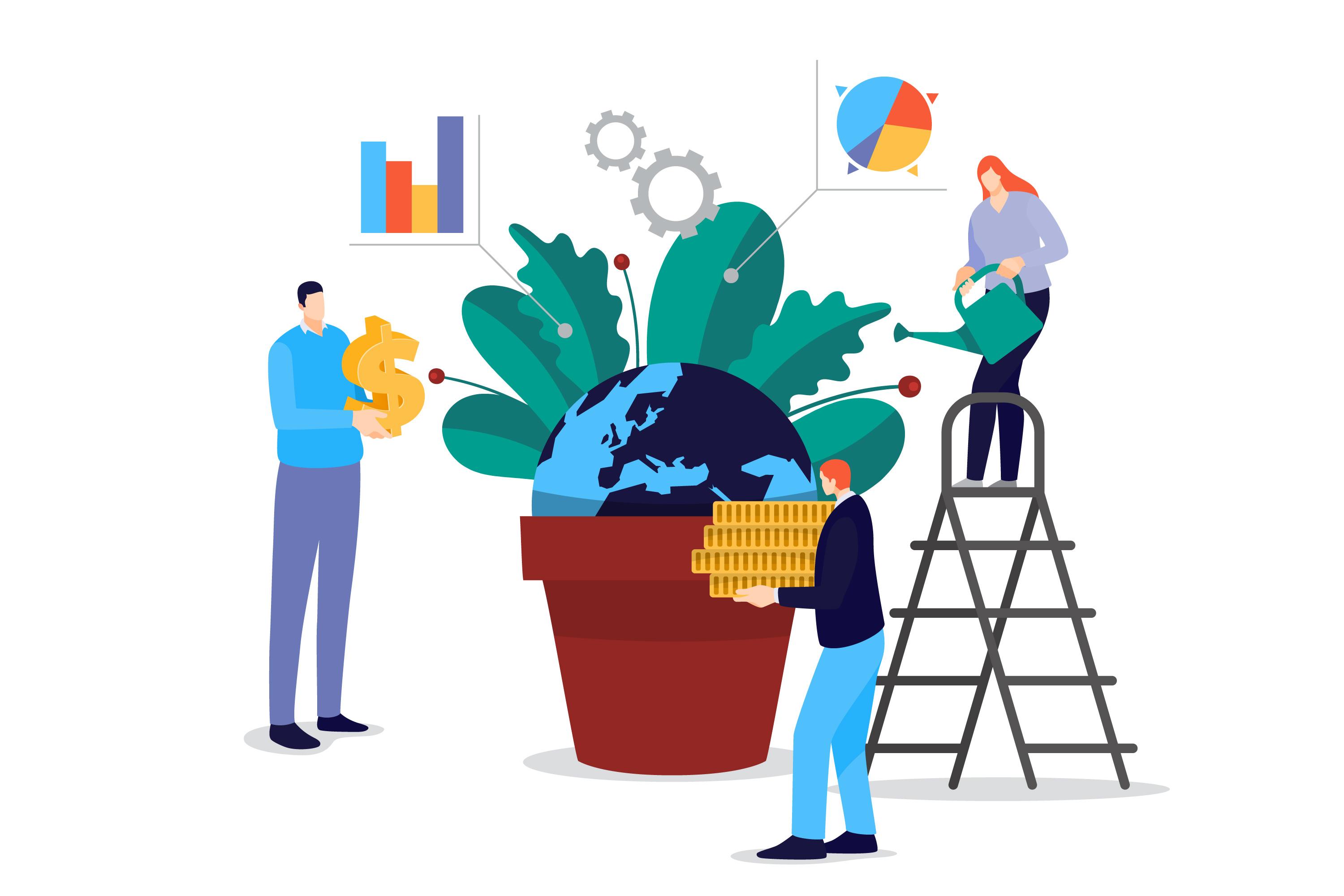Written by Aliyah Assegaf
16 October 2024

As the world grapples with the ecological, social, and economic crises of our time, it has become clear that we need to rethink traditional models of growth. A regenerative economy offers a compelling vision, one that shifts from extraction and consumption to renewal and restoration. Central to this shift is the need for intergenerational leadership—collaborating across generations to foster resilient systems that regenerate both natural and human capital.
What is a Regenerative Economy?
A regenerative economy transcends the idea of sustainability, which focuses on maintaining the status quo. Instead, it seeks to restore and replenish resources, improve ecosystems, and enhance social equity. This approach draws on principles of circularity, collaboration, and inclusivity.
According to the World Economic Forum (WEF), a regenerative economy emphasizes systems thinking and moves beyond minimizing harm to actively creating positive outcomes for the planet and society. This paradigm aligns with natural cycles, supporting biodiversity, local ecosystems, and community resilience. It promotes a shift from individualism to collective well-being, integrating social and environmental priorities into economic decisions.
Furthermore, research from the Sustainable Development Solutions Network (SDSN) highlights that regenerative systems are built on three core pillars: ecological regeneration, social inclusivity, and economic resilience. These pillars emphasize creating systems that restore natural resources while ensuring fair distribution of wealth and opportunities.
Intergenerational Leadership: Key to a Regenerative Future
One of the central tenets of a regenerative economy is the role of intergenerational leadership. Each generation brings different perspectives, skills, and values to the table, which can drive more holistic and inclusive solutions. Younger generations, particularly Millennials and Gen Z, are deeply aware of the environmental and social challenges ahead,
while older generations bring experience, networks, and institutional knowledge. Together, these generations can co-create solutions that are both visionary and grounded in practice.
The Cadmus Journal points out that crossing the threshold toward a regenerative economy requires diverse perspectives to be integrated into leadership. Intergenerational collaboration fosters innovation, helping leaders move away from siloed thinking toward more interconnected, systemic approaches. This is especially important as regenerative models aim to tackle complex, adaptive challenges like climate change, economic inequality, and biodiversity loss.
Moreover, a multi-generational leadership model enables knowledge transfer between seasoned leaders and emerging change-makers. As Ernst & Young (EY) notes, effective leadership for a regenerative future should embrace humility, recognizing that no one person or generation holds all the answers. The emphasis on learning and adaptability is crucial as we navigate the complexities of regenerating both our economies and ecosystems.
Regenerative Principles in Practice
Applying regenerative principles in practice requires a comprehensive framework that integrates environmental, social, and economic regeneration. Organizations and governments must collaborate with communities, particularly marginalized groups, to ensure that the benefits of regenerative economies are equitably shared.
EY’s regenerative principles advocate for a future where businesses and industries not only reduce their environmental footprint but also contribute to the restoration of natural ecosystems. Regenerative agriculture, for example, offers a powerful case study of how we can shift from exploitative practices to ones that improve soil health, biodiversity, and water management, while also increasing food security and economic resilience for farming communities.
Another example comes from SDSN's 2024 report, which highlights the role of local and indigenous knowledge in driving regenerative practices. These communities often have deep ecological wisdom and sustainable land management techniques that can inform larger-scale regenerative initiatives.
Building a Regenerative Economy: Challenges and Opportunities
Transitioning to a regenerative economy is not without challenges. One major hurdle is the ingrained short-termism in economic systems. Traditional financial models prioritize immediate returns over long-term ecological and social health. Shifting toward regenerative finance requires rethinking value creation, integrating ecological and social capital into financial decision-making. This transition will involve creating new metrics and standards that reward regeneration, rather than mere profitability.
However, as the World Economic Forum argues, there is a growing recognition of the long-term benefits of regenerative models. These systems offer resilience against shocks, whether they come from environmental disasters or market instability. Additionally, regenerative practices create shared value, benefiting a broader set of stakeholders, including communities, ecosystems, and future generations.
The role of technology and innovation also cannot be understated. Emerging technologies, such as AI, blockchain, and digital platforms, can help scale regenerative practices. For instance, AI-driven models can optimize resource management, while blockchain can create transparent supply chains that reward regenerative behaviors. However, it is essential to ensure that these innovations remain inclusive and accessible to all, particularly the marginalized.
The Path Forward
The journey toward a regenerative economy is both urgent and challenging, but it is also filled with opportunities. Intergenerational leadership will play a critical role in this transition, fostering collaboration between the wisdom of the past and the innovation of the future. By integrating regenerative principles into every facet of society—business, governance, and community—we can create systems that not only sustain but also enrich life on Earth.
The challenges are vast, but the potential rewards—a thriving planet and a more equitable society—are even greater. To move forward, we must embrace the regenerative ethos of interconnectedness, collaboration, and renewal, paving the way for a flourishing future for all generations.
Resources
